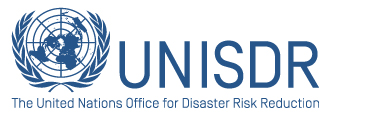|
The Role of UN Resident Coordinators in implementing the Hyogo Framework for Action
Why disaster risk reduction is becoming an increasing challenge to the world
The number and impact of disasters caused by natural hazards are dramatically increasing. Over the past 30 years, the number of disasters triggered by natural hazards - such as earthquakes, cyclones, floods, and drought, tsunamis - has increased threefold. Five times more people are now affected than just a generation ago. Rapid urbanization increases disaster risk as well; today, eight out of the world's ten most populous cities are located in areas at high risk to earthquakes, six of them are located on coastal areas, prone to cyclones, sea level rise or tsunamis. A billion people live in unstable, overcrowded slums. By 2020, that figure may double. It is a matter of time when the next major earthquake will hit a mega-city, which may not only destroy the city itself, but could also affect the world's economy. Not addressing this issue is not an option. As recent disasters have once again highlighted, disaster risk reduction is a critical challenge for the UN, and is expected to get worse due to climate change. |
|
| |
How Resident Coordinators can make a difference
As emphasized in the Hyogo Framework for Action 2005-2015: Building the Resilience of Nations and Communities to Disasters (HFA) [http://www.unisdr.org/eng/hfa/docs/HFA-brochure-English.pdf], a strong national and local commitment is a prerequisite for successful disaster risk reduction at the national level. While States have the primary responsibility in implementing the disaster risk reduction measures at the national level, the HFA also made a direct call to Resident Coordinators View Document (p.16, #32(e)) to support actions that promote the integration of disaster risk reduction considerations into development assistance frameworks, such as the Common Country Assessments, the United Nations Development Assistance Frameworks and poverty reduction strategies. The Resident Coordinators represent the ISDR system at the national level, and in their capacity as the heads/convenors of the UN Country Teams they are in the best position to coordinate the United Nations' disaster risk reduction efforts to support national governments. |
|
| |
How the ISDR system can assist Resident Coordinators
The UN/ISDR secretariat offers advocacy and information services, electronic and printed materials and tools, temporary advisory services from staff in the regional offices, or other resource persons to support Resident Coordinators and UN Country Teams for making disaster risk reduction a national priority and to raise the awareness of the subject, as set out in the HFA. |
|
| |
UN/ISDR services to UN Resident Coordinators, including tools:
http://regional/Flyer-UNISDR-services.pdf |
|
| |
The ISDR system supports nations and communities to implement the Hyogo Framework. ISDR is a system of partnerships including governments, inter-governmental and non-governmental organizations, international financial institutions, scientific and technical bodies and specialized networks as well as civil society and the private sector. The ISDR system's basic structure includes a Global Platform for Disaster Risk Reduction, a Management Oversight Board, an Inter-Agency Group that developed an ISDR System Joint Work-Programme, thematic and regional platforms and the UN/ISDR secretariat. |
ISDR system structure: http://preventionweb.net/english/hyogo/isdr/structure/ |
The UN/ISDR secretariat, launched in 2000 (A/RES/54/219) serves as the focal point in the United Nations system for the coordination of disaster reduction and to ensure synergies among the disaster-reduction activities of the United Nations system and regional organizations and activities in socio-economic and humanitarian fields (A/RES/56/195). The secretariat services the ISDR system and administrates the UN Trust Fund for Disaster Reduction. Core functions of the secretariat include: follow-up on the implementation of HFA and report on progress, facilitate policy guidelines for the priority areas, including by linking disaster risk reduction to the climate change negotiations, conduct awareness campaigns and high-level policy dialogues, provide information services and tools, and support national platforms and coordination efforts in these areas, through its regional programmes. The World Disaster Reduction Campaign 2008-09 is 'Hospitals Safe from Disaster: Reduce Risk, Protect Health Facilities, Save Lives'.
For more information:
http://www.eird.org; http://www.unisdr.org; http://www.preventionweb.net
The World Bank launched a Global Facility for Disaster Reduction and Recovery in 2006 in support of the implementation of the HFA and ISDR system: http://www.gfdrr.org. |
|

